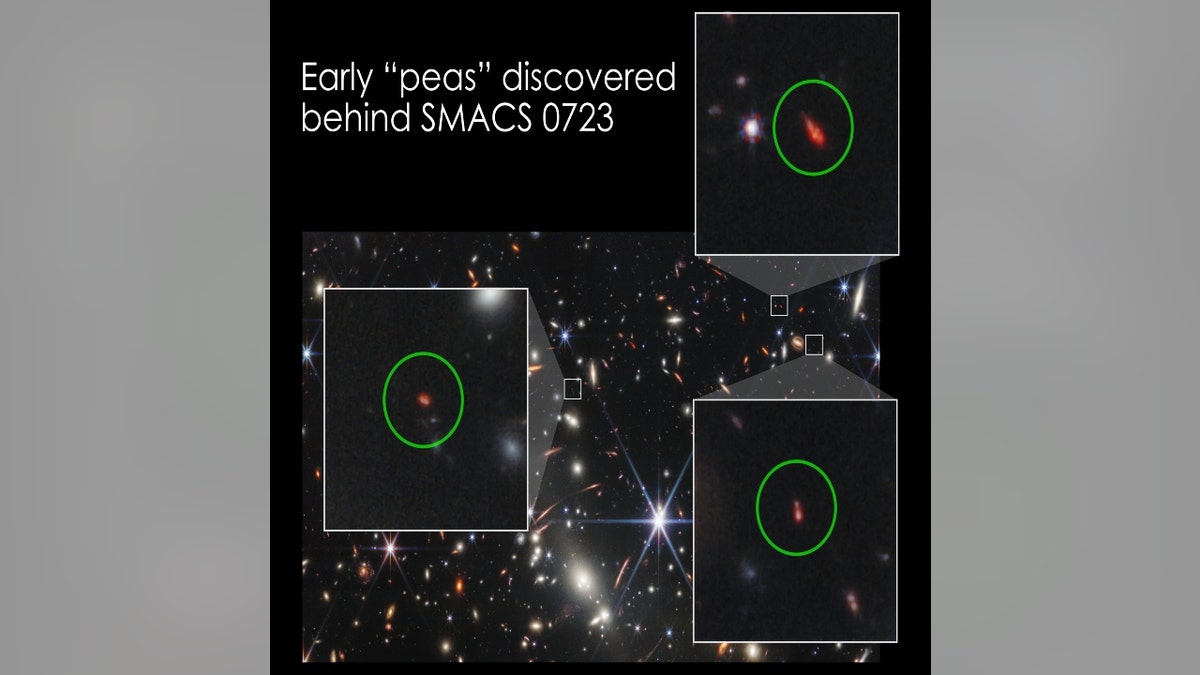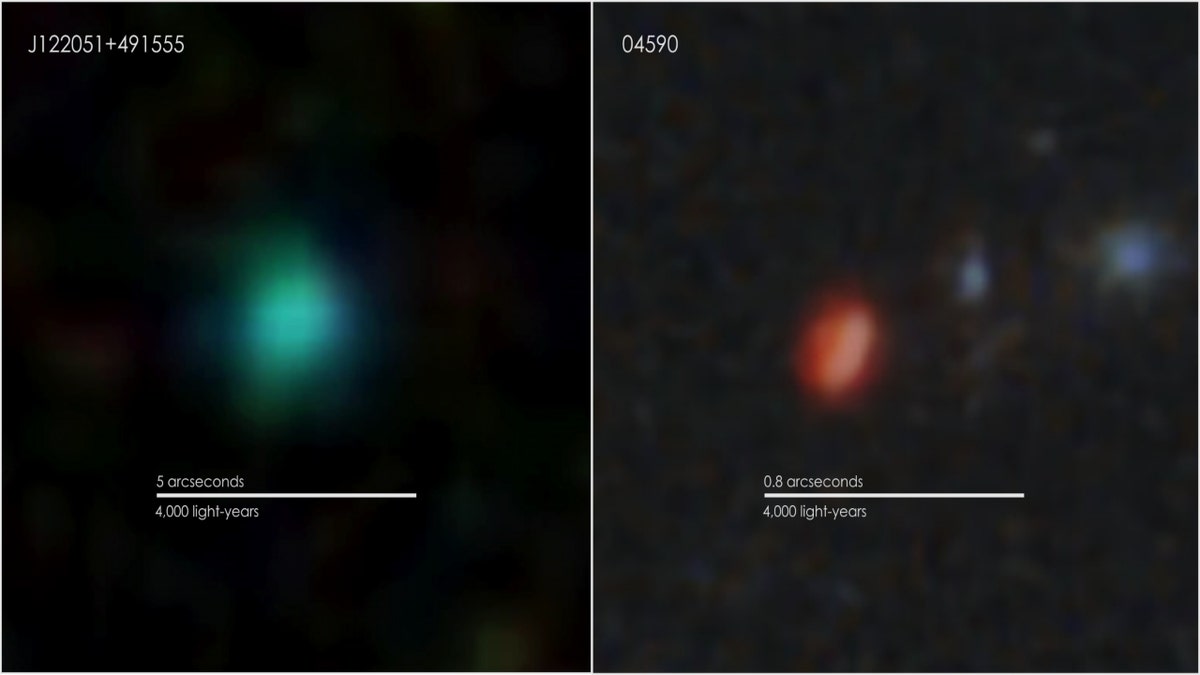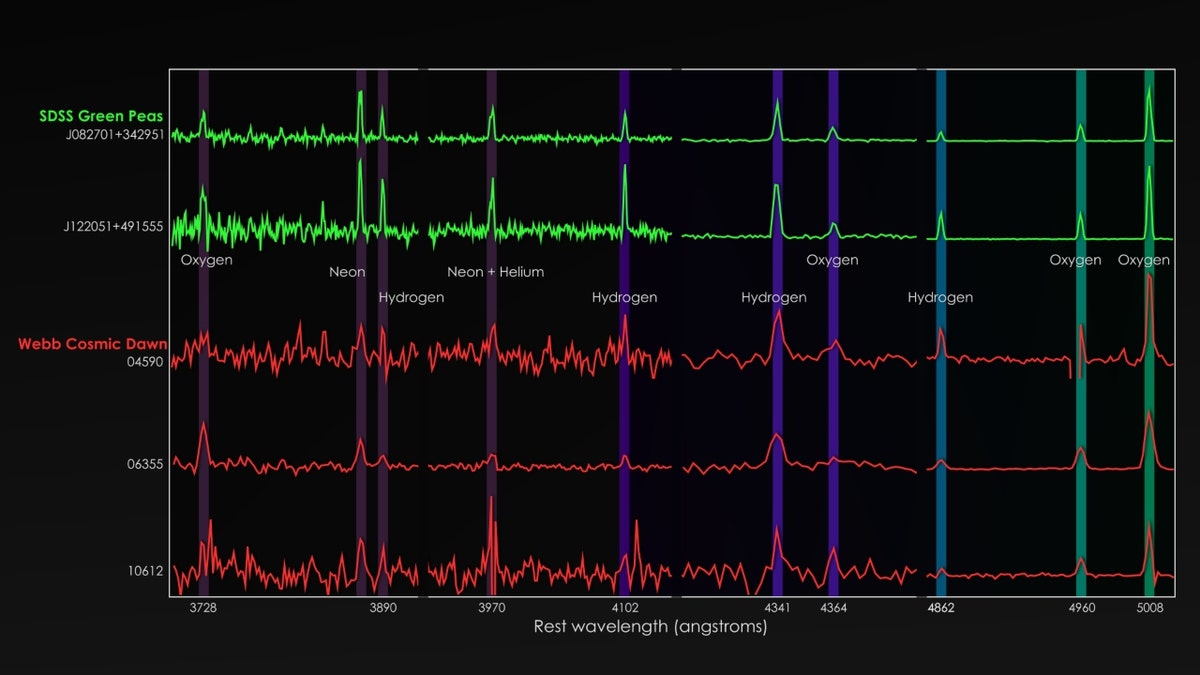Webb Space Telescope allows us to 'look into the past': Theoretical physicist
Theoretical physicist Dr. Michio Kaku explains the significance of new images provided by NASA's Webb Space Telescope on 'Sunday Night in America.'
NASA said a new analysis of distant galaxies captured by the James Webb Space Telescope has revealed what may be the most chemically primitive galaxy identified thus far.
The research shows the galaxies are extremely young and share some similarities to "green peas," which are a rare class of small galaxies near home.
"With detailed chemical fingerprints of these early galaxies, we see that they include what might be the most primitive galaxy identified so far. At the same time, we can connect these galaxies from the dawn of the universe to similar ones nearby, which we can study in much greater detail," James Rhoads, an astrophysicist at NASA’s Goddard Space Flight Center, said in a statement.
The results were presented in a Jan. 3 paper in the open access express scientific journal The Astrophysical Journal Letters.
RUSSIA WILL LAUNCH NEW SPACECRAFT TO BRING CREW BACK FROM INTERNATIONAL SPACE STATION

A trio of faint objects (circled) captured in the James Webb Space Telescope’s deep image of the galaxy cluster SMACS 0723 exhibit properties remarkably similar to rare, small galaxies called "green peas" found much closer to home. (Credit: NASA, ESA, CSA, and STScI)
NASA said green pea galaxies were discovered in 2009 by volunteers taking part in the Galaxy Zoo project, standing out as small, round, unresolved dots with green coloring.
The shade is a consequence of both the colors assigned to different filters in the survey’s composite images and a property of the galaxies themselves.
The colors are unusual because a good chunk of their light comes from brightly glowing gas clouds, which emit light at specific wavelengths.
Peas are notably quite compact, as well, and are typically only about 5,000 light-years across.

A green pea galaxy imaged by the Sloan Digital Sky Survey is shown alongside an infrared picture of an early pea captured by NASA’s James Webb Space Telescope. At left is J122051+491255, a green pea about 170 million light-years away that’s about 4,000 light-years across, a typical size. At right is an early pea known as 04590, whose light has taken 13.1 billion years to reach us. (Credit: SDSS and NASA, ESA, CSA, and STScI)
JAMES WEBB TELESCOPE REVEALS BARRED GALAXIES BILLIONS OF YEARS AGO
A trio of compact infrared objects found using Webb's infrared image that captured thousands of galaxies in and behind the cluster SMACS 0723 – a gravitational lens – looked like they could be distant relatives of green peas.
The farthest of these galaxies was magnified approximately 10 times.
Using the telescope's Near-Infrared Spectrograph instrument, Webb captured the cluster and the selected galaxies.

The James Webb Space Telescope’s Near-Infrared Spectrograph captured the chemical fingerprints of selected galaxies behind SMACS 0723, including three faint, distant objects. (Credit: NASA’s Goddard Space Flight Center/Rhoads et al. 2023)
The agency said Rhoads and researchers examined measurements, correcting them for the wavelength stretch resulting from the expansion of space, and they saw characteristic features emitted by oxygen, hydrogen and neon line up in a stunning resemblance to those seen from nearby green peas.
In addition, the Webb spectra made it possible to measure the amount of oxygen in these galaxies for the first time.
CLICK HERE TO GET THE FOX NEWS APP
Two of the galaxies, which resemble green peas, contain oxygen that is about 20% of the level in our Milky Way.
"We’re seeing these objects as they existed up to 13.1 billion years ago, when the universe was about 5% its current age," Goddard researcher Sangeeta Malhotra explained. "And we see that they are young galaxies in every sense – full of young stars and glowing gas that contains few chemical products recycled from earlier stars. Indeed, one of them contains just 2% the oxygen of a galaxy like our own and might be the most chemically primitive galaxy yet identified."


